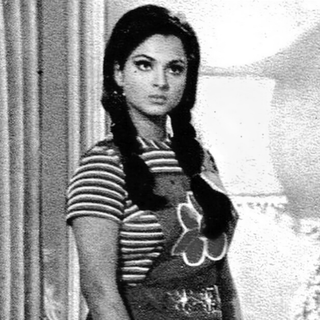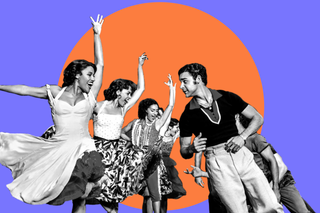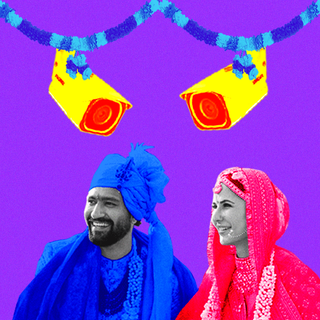
Do Problematic Classics Like ‘West Side Story’ Deserve Remakes?
Critics note the cultural inauthenticity of the original title continues to have real-life consequences for the Puerto Rican community.

West Side Story is 64 years old. It is a narrative that is said to “transcend generations,” for irrespective of where the person is in the world or what era it is, there will always be love and rivalry in a social context. Contrary to the notorious reputation of remakes in general, the new Steven Spielberg version is significantly more diverse, authentic, and representative of the Latin community and their experiences in a stratified (geographically and racially) 1960s America. Racial and ethnic animosity is a dance doomed to play out — in the past, present, and future.
But the world of West Side Story is built on unequal, patchy grounds. The Broadwaymusical based on the premise of Romeo and Juliet, originally created by four white men, remains “beloved and vexing” at once. Vexing, for it continues to culturally appropriate a community’s struggles, whilst stereotyping real people and normalizing real-life violence.
Does the musical deserve a new hearing, a new audience, and renewed appreciation, then? Can good intentions undo the undercurrents of a problematic story?
It depends on what purpose reimagining a classic serves. If it is to correct the gaps of its predecessor, the new West Side Story makes some headway. This reimagining, which takes the original source material from the 1957 Broadway show and the 1961 inspired Oscar-winning movie, also involves a feud between a gang of white youth, the Jets, and a gang of Puerto Rican immigrants, the Sharks.
It is naturally an improvement over what was, releasing its grip on stereotypes. Spielberg is said to have made a “milestone” by insisting on an authentic Latin cast. The original version became infamous for its use of brownface — white actors wearing dark-skin make-up to portray Puerto Rican characters (the 1961 movie featured the white actress Natalie Wood playing the Latina role of Maria, the protagonist). In sharp comparison, the 2021 version feels more attuned to a Latinx production. Other hat tips to inclusive casting include an openlytransgender character in the movie (Anybodys, played by Iris Menas) and a minor Black character called Abe (played by Curtiss Cook). “…we become closer to the truth, a Latinx community that is not portrayed as a monolith in any sense of the word and that becomes more joyful and vibrant because of it,” as one Latinx writer noted.
The movie also refused to carry Spanish subtitles; “that language had to exist in equal proportions alongside English,” Tony Kushner, who wrote the remake’s screenplay, had said, explaining this as a means to ensure authentic portrayal. The politics of subtitling is widely debated; the three-inch barriers tend to exoticize and delegitimize non-western narratives.
A case made in favor of its cultural legacy is the paradigm of “outsiders” and “insiders.” “The swoon factor, the yearning beauty of those songs, the hypnotic jackknife ballet of ’50s delinquents dancing out their aggression on the New York streets,” as Variety noted. The rivalry between the Jets and Sharks, the “whites” and Puerto Ricans, is a tragedy as both are in the same boat, subject to the true social disease of gentrification. “One of the most beautiful lessons of West Side Story is that these two groups of people have more commonalities than they do differences, and that fits to some larger issues we have in society globally,” Ariana DeBose, the Afro-Latina actress and dancer who plays Anita, said.
But the West Side Story update, one which makes surface-level fixes, doesn’t negate its thorny legacy. One would have to go much deeper, down to the foundational layers of the original narrative to understand why these inclusive touch-ups might not quite cut it.
Related on The Swaddle:
‘Tick, Tick… BOOM!’ Is a Tragedy About Time, but It Doesn’t Ask Who Gets To Have It
For one, West Side Story for many Americans became the first kind of popular entertainment featuring Puerto Rican characters. It remains one of the most influential stories portraying Puerto Ricans — in telling people who they are and how they behave. Experts have critiqued it abundantly. “…nothing onscreen — beyond the latticework of fire escapes — reminded me of the people or neighborhood I knew from frequent visits to New York,” Carina del Valle Schorske, a writer, argued. “I finished the movie feeling even more confused than I was before about what being Puerto Rican was supposed to mean — to me, and to the ‘average’ American.”
The Latin community is vastly under-represented in film and television, numerous studies have found, which impacts their integration. That stereotyping, especially in West Side Story that frames the Puerto Rican gangs as violent groups, may impact real-life violence. “Drawing on centuries-old stereotypes about Latinos, the women are virginal and childlike or sexual and fiery; the men are violent and clannish. [It] widely popularized racist and sexist stereotypes that continue to shape how the world sees Puerto Ricans and how they see themselves,” Frances Negrón-Muntaner, founding director of the Media and Idea Lab at Columbia University, wrote on the Women’s Media Center website. The public discourse was parochial: like a narrative West Side Story sold, the Puerto Rican community was seen as people without education and those prone to violence. Experts note how all musicals rely on stereotypes of some kind; but the question is whether these templates are destructive. And in this case, the Puerto Rican representation worked to reinforce “an expectation of criminality that was already violently shaping the politics of the period.”
Moreover, if the inspiration was the Jews vs. Catholic friction (from Romeo and Juliet), the current discord is more ethnic and racial as Puerto Ricans and white people. But in doing so, it also in some ways capitalized on the news hook of the times — without authentically engaging with the lived experiences of Puerto Ricans. In fact, Arthur Laurents, one of the original creators, himself said in a 2008 interview: “Because of our own bias and the cultural conventions of 1957, it was almost impossible for the characters in West Side Story to have authenticity.” Even now, the story relies on aesthetics laid out by four white men and their perception of the Puerto Rican identity.
Only recently Lin-Manual Miranda’s In the Heights, another musical-turned-movie about the Latin community in New York, was critiqued for accusations of colorism in its casting.
Related on The Swaddle:
Oscar Nominations Are Out, And They’re Overwhelmingly White and Male — Again
Just like the West Side Story capitalized on social tensions then, it may be playing a similar trick now. “I think there is something sinister about capitalizing on the nostalgia of a Hollywood artifact, casting an all-Latinx Sharks cast, while still using the liberal language of ‘inclusion’ and ‘diversity’ as armor against critique,” Isabelia Herrera, a Times critic fellow, noted. The 2021 movie also comes in the backdrop of an industry that deals with questions of representation and the weight of racism; the desire for building new narratives is not a semantic but an important origin point to scrutinize.
“No matter how many Nuyorican actors are cast, how many lines are recited in Spanish, how many Puerto Rican consultants are hired, and how many panels with historical experts are held, the collective effort does not correct the problematic appropriation on which the musical was built,” writer Ashley Lee argued in LA Times. The violent interactions again tells a Shakespearian tale, not the authentic one of people it claims to be about. Some may argue its history may make the classic unsalvageable. “It’s hard to think that this is still what we’re talking about and that there are not a greater range of voices and stories told,” Frances Negrón-Muntaner, a Puerto Rican filmmaker, said of these remakes.
This places West Side Story as a site of conflict. Does the “timeless” story have anything to offer today?
The show’s artistic power has allowed it to survive for over six decades and across different mediums, so the question of its foothold in our consciousness is paramount. But how does one engage with a work of art that has a monumental cultural footprint and still be emotionally responsive to contemporary times?
For one, it may help to contextualize its relevance with the aforementioned issues. The original West Side Story set a dangerously low bar; not wearing brownface or being more authentic to the Latinx community feels like significant improvements when in fact they are the bare minimum. These “updates” then must be viewed through the lens of necessity, rather than being disguised as “inclusion” and “progress.”
West Side Story, circa 2021, is woke, relatively more inclusive, and self-aware about its failings. And in acknowledging this slight progression, the effort must be to not minimize its flaws. Reimagining a classic can work to correct the gaps of its predecessor — but that only works if the gaps are recognized in the first place.
As Herrera noted: “criticism emerges from a place of love — a desire to make art, life, and politics better. I don’t see these critiques as mutually exclusive.”
Saumya Kalia is an Associate Editor at The Swaddle. Her journalism and writing explore issues of social justice, digital sub-cultures, media ecosystem, literature, and memory as they cut across socio-cultural periods. You can reach her at @Saumya_Kalia.
Related


The Buzz Cut: Media Kicking Itself for Not Buying Pegasus to Spy on High Profile Celebrity Wedding
